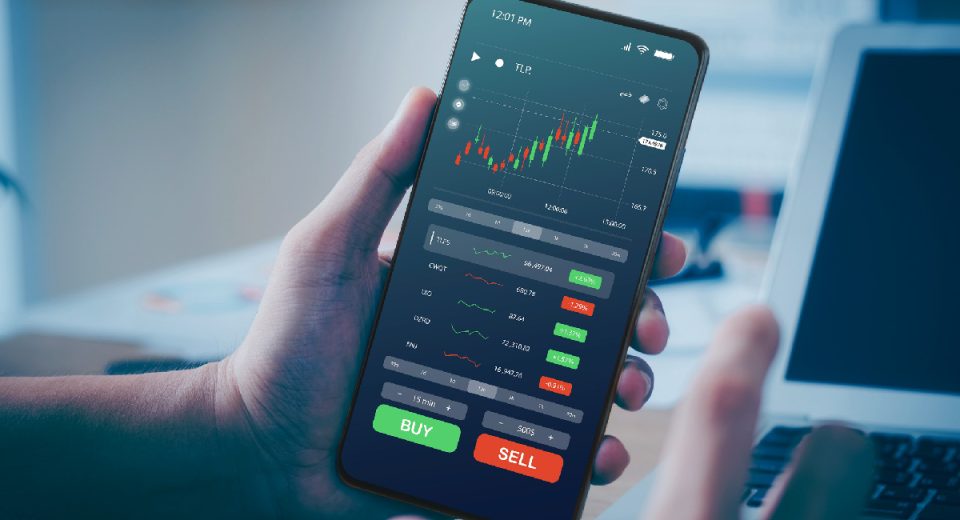Demystifying the Most Common Trading Jargons

Industry jargon helps you understand and communicate complex concepts/situations concisely. Become familiar with the most popular trading terms to understand and discuss the financial markets with greater confidence.
1. Bull and Bear Runs
Bulls and bears are trading terms that originate from the stance of these animals during a fight. A bull tends to use its horns to throw its opponent upward, while a bull stomps its opponent down.
When the price of an asset in the financial markets continues to rise, it is called a bull run. In such a situation, traders who are optimistic about the asset dominate the market, significantly outnumbering those who expect prices to decline. This drives prices higher, resulting in a continued uptrend, known as a bull run.
When an asset is on a sustained downtrend, it is called a bear run. This means that financial traders with a pessimistic view of an asset significantly outnumber those with an optimistic view.
Rallies & Corrections
These trading terms are also used to describe price action. Price appreciation, whether it’s a short-term spike or a long-term uptrend, can be referred to a rally. For instance, gold prices jumped past $2,500 in August 2024, after Federal Reserve Chairman Jerome Powel indicated interest rate cuts ahead. A short-term rally may last for a few trading sessions.
The price of an asset may undergo a pullback during a bull run. Experts call such a price action a correction when the price declines by 10% or more. This is usually a sign of bears trying to reverse the trend. For instance, in early August 2024, Nasdaq fell more than 10% from its record highs on disappointing earnings reports from tech giants like Amazon and Intel.
Rallies and corrections depend on several factors, including economic data, earnings releases, asset fundamentals, market sentiment, and news. Both rallies and corrections offer attractive trading opportunities, although risk management becomes even more important.
2. Liquidity and Slippage
Liquidity and slippage are interrelated trading terms. The ease of filling orders in a market is called liquidity. This means that the asset under consideration is traded actively with a high volume of buy and sell orders. When the market has only a few participants, order fills get delayed. This is said to be a market with low liquidity.
The price of an asset moves constantly. Due to this, there may be a difference between the price at which you wish to open a position and the one at which the order gets placed. This deviation between expected and actual price is known as slippage and it affects the profit/loss you make. Slippage can be high in fast-moving markets. A popular technique to minimise slippage is to trade with brokers who have deep order books. With high liquidity, slippage is low, allowing you to make better trading decisions.
3. Arbitrage
Although the global financial markets have become increasingly connected, there could be small differences in the price of an asset in two or more markets. Traders can exploit this price differential to make a profit. This strategy is called arbitrage. It is a fast-paced trading technique because markets move quickly to close the price difference.
In the forex market, a trader may find profit opportunities by simultaneously trading two or more currency pairs. For instance, a trader has US dollars in the trading account and trades them for euros (EUR/USD), then uses the euros to get pounds (EUR/GBP) and finally trades these back into US dollars (USD/GBP). This may allow the trader to exploit the difference in currency valuations across markets and time-zones. This strategy requires extensive research and practice, as markets tend to close price differences very quickly.
4. Hedging
Hedging is an active risk management strategy. It involves opening a trade in one direction and another in the opposite direction for the same asset or opening trades in assets that have high inverse correlation. For instance, traders may open both long and short positions in oil or open long positions in both oil and the US dollar. This is done to offset losses in case the market moves against your speculations.
The technique is especially useful for trading derivatives, like CFDs. This is because CFDs are typically traded on margin, which amplifies your profit potential as well as risk. As CFDs are traded in rising and falling markets, traders do not have to look for assets with a strong correlation.
Hedging is an addition to risk management beyond setting necessary exit instructions, such as taking profit and stop loss orders, to minimise losses. It is not a replacement for these.
5. Market Order and Limit Order
Market orders are trading instructions given to the broker to buy or sell the asset at the current price. These orders are filled almost immediately at the best available price. Traders prefer to use such orders in financial markets with high liquidity and volatility.
Limit orders allow traders to set a certain price point to execute the trade. They can specify the maximum acceptable purchase price or the minimum sell price for their chosen assets. High-frequency and day traders use limit orders to make the most of tiny movements during a trading session. The trade is executed only when the price hits the set value.
6. Risk Appetite
Risk appetite as a trading term refers to the extent of risk a trader is willing to take. It helps you decide the amount of risk you can take on each position. Experienced traders avoid putting more than 2% of their trading accounts at risk in one trading position.
Risk-averse sentiment drives traders toward safer assets in a risk-off environment. For instance, during economic uncertainties, traders tend to increase gold in their portfolio and offload equities.
Risk sentiment describes how most financial market participants are behaving. Risk sentiment is said to be high when traders add more risky assets to their portfolios for the opportunity of higher returns.
7. Timing the Market
Market timing refers to choosing when to move your money in and out of the financial market. It involves using technical analysis to decide when to enter and exit a position to optimise gains.
Knowing the meaning of the most commonly used trading terms is vital in your trading journey. It can help you better understand educational resources and news, communicate faster with fellow traders and benefit more from the advice shared by experienced traders.
Disclaimer:
All data, information and materials are published and provided “as is” solely for informational purposes only, and is not intended nor should be considered, in any way, as investment advice, recommendations, and/or suggestions for performing any actions with financial instruments. The information and opinions presented do not take into account any particular individual’s investment objectives, financial situation or needs, and hence does not constitute as an advice or a recommendation with respect to any investment product. All investors should seek advice from certified financial advisors based on their unique situation before making any investment decisions in accordance to their personal risk appetite. Blackwell Global endeavours to ensure that the information provided is complete and correct, but make no representation as to the actuality, accuracy or completeness of the information. Information, data and opinions may change without notice and Blackwell Global is not obliged to update on the changes. The opinions and views expressed are solely those of the authors and analysts and do not necessarily represent that of Blackwell Global or its management, shareholders, and affiliates. Any projections or views of the market provided may not prove to be accurate. Past performance is not necessarily an indicative of future performance. Blackwell Global assumes no liability for any loss arising directly or indirectly from use of or reliance on such information here in contained. Reproduction of this information, in whole or in part, is not permitted.




